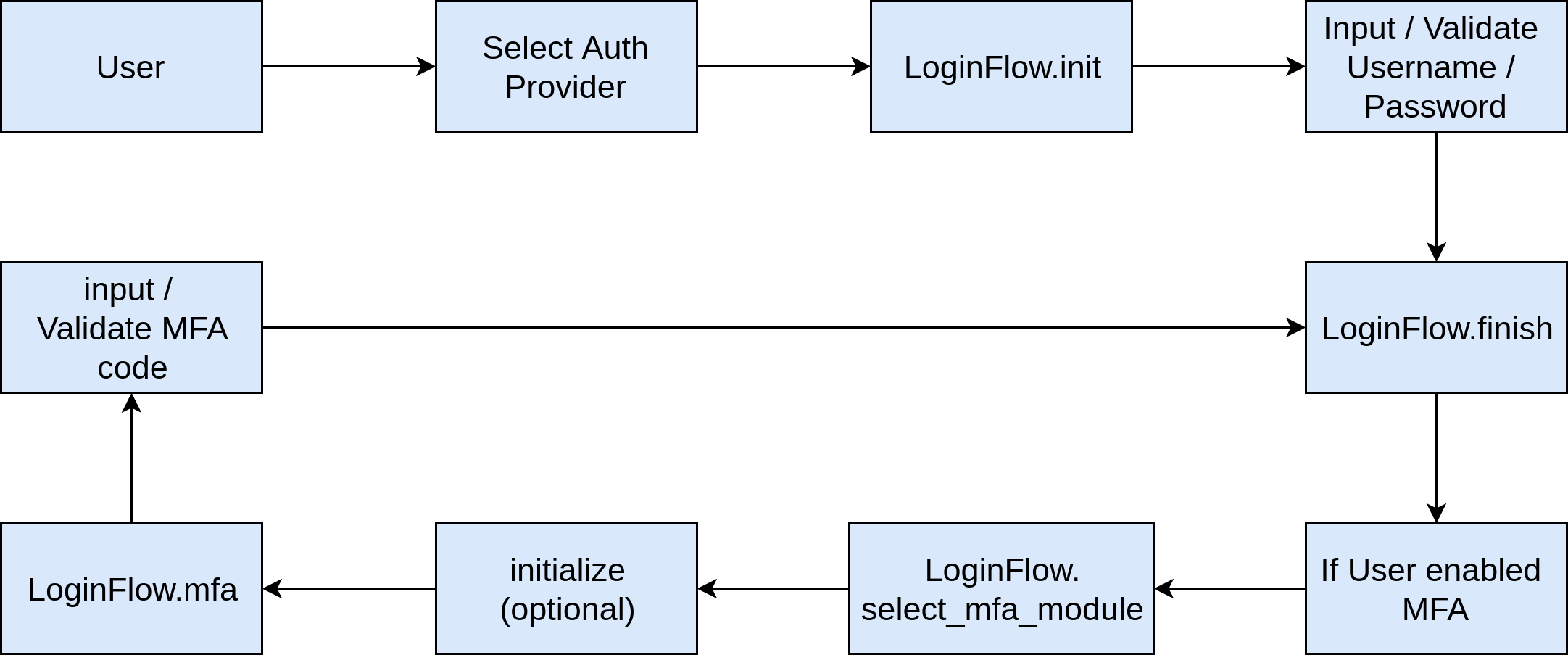Multi-factor Authentication Modules
Multi-factor Authentication Modules are used in conjunction with Authentication Provider to provide a fully configurable authentication framework. Each MFA module may provide one multi-factor authentication function. User can enable multiple mfa modules, but can only select one module in login process.
Defining an mfa auth module
We currently only support built-in mfa auth modules. Support for custom auth modules might arrive in the future.
Multi-factor Auth modules are defined in homeassistant/auth/mfa_modules/<name of module>.py. The auth module will need to provide an implementation of the MultiFactorAuthModule class.
For an example of a fully implemented auth module, please see insecure_example.py.
Multi-factor Auth modules shall extend the following methods of MultiFactorAuthModule class.
| method | Required | Description |
|---|---|---|
@property def input_schema(self) | Yes | Return a schema defined the user input form. |
async def async_setup_flow(self, user_id) | Yes | Return a SetupFlow to handle the setup workflow. |
async def async_setup_user(self, user_id, setup_data) | Yes | Set up user for use this auth module. |
async def async_depose_user(self, user_id) | Yes | Remove user information from this auth module. |
async def async_is_user_setup(self, user_id) | Yes | Return whether user is set up. |
async def async_validate(self, user_id, user_input) | Yes | Given a user_id and user input, return validation result. |
async def async_initialize_login_mfa_step(self, user_id) | No | Will be called once before display the mfa step of login flow. This is not initialization for the MFA module but the mfa step in login flow. |
Setup Flow
Before user can use a multi-factor auth module, it has to be enabled or set up. All available modules will be listed in user profile page, user can enable the module he/she wants to use. A setup data entry flow will guide user finish the necessary steps.
Each MFA module need to implement a setup flow handler extends from mfa_modules.SetupFlow (if only one simple setup step need, SetupFlow can be used as well). For example for Google Authenticator (TOTP, Time-based One Time Password) module, the flow will need to be:
- Generate a secret and store it on instance of setup flow
- Return
async_show_formwith a QR code in the description (injected as base64 viadescription_placeholders) - User scans code and enters a code to verify it scanned correctly and clock in synced
- TOTP module saved the secret along with user_id, module is enabled for user
Workflow

Configuration example
# configuration.xml
homeassistant:
auth_providers:
- type: homeassistant
- type: legacy_api_password
auth_mfa_modules:
- type: totp
- type: insecure_example
users: [{'user_id': 'a_32_bytes_length_user_id', 'pin': '123456'}]
In this example, user will first select from homeassistant or legacy_api_password auth provider. For homeassistant auth provider, user will first input username/password, if that user enabled both totp and insecure_example, then user need select one auth module, then input Google Authenticator code or input pin code base on the selection.
insecure_example is only for demo purpose, please do not use it in production.
Validation session
Not like auth provider, auth module use session to manage the validation. After auth provider validated, mfa module will create a validation session, include an expiration time and user_id from auth provider validate result. Multi-factor auth module will not only verify the user input, but also verify the session is not expired. The validation session data is stored in your configuration directory.